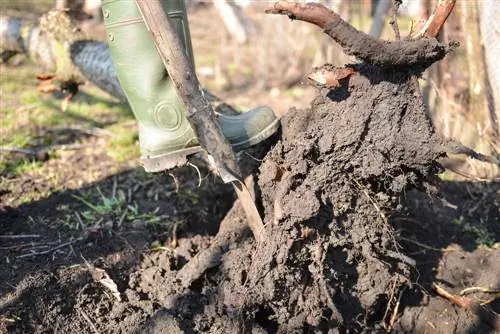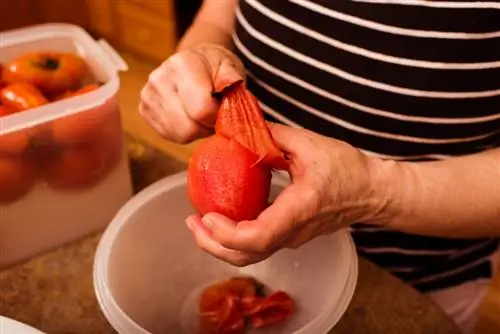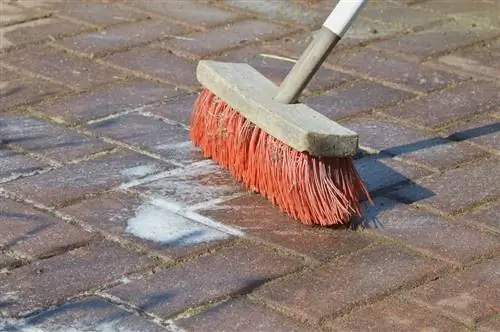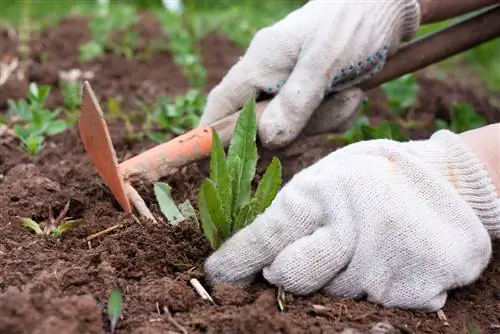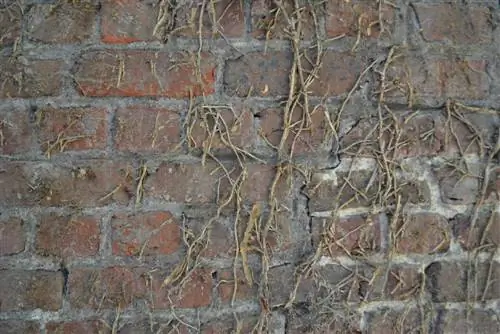- Author admin [email protected].
- Public 2023-12-16 16:46.
- Last modified 2025-01-23 11:22.
When trees have to be felled due to fungal infestation, storm damage or to redesign the garden, the rootstock remains in the ground. There are various methods that can be used to remove the residue from the soil.
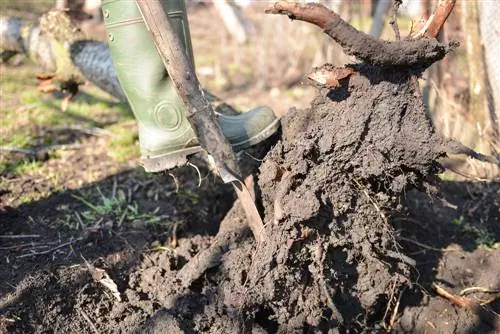
How can you remove root residue?
Remnants of roots can be removed by prying them out with a spade and rope, using a root rat for larger trunks, using a root cutter for hard-to-reach stumps, or accelerating the natural rotting process through composting.
How to remove root residue:
- Spade and rope: for trunks with a maximum diameter of 30 centimeters
- Root rat: for larger tree stumps
- Root cutter: for stumps that cannot be reached with the excavator
- Composting: if the rhizome should disappear naturally
Spade and rope
Shallow-rooted trees can be removed by hand using muscle power and a spade. Insert the sharp implement into the soil around the base of the trunk and expose the root ball. Cut the root network so that it can be lifted out of the hole. Attach a rope around the stump and use steady movements to pry it out.
Root Rat
There are special root hoes that can be installed on small excavators. The attachment scrapes the wood without jamming. With this method, residues can be removed quickly and efficiently, even in small gardens. The prerequisite is that the tree stump can be reached with the excavator. Oak trunks with a diameter of 90 centimeters are no problem for the device, which you can rent at many rental stations for around 20 euros per hour.
Root cutter
Stubs can be removed quickly with a tree stump grinder, which you can rent from a hardware store for around 80 euros. Shorten the tree close to the ground and place the device directly above the stump so that the vertically positioned blades can penetrate the wood as they are lowered. The root is slowly crushed by rotating movements. Since you adjust the milling depth yourself, you can either remove all of the root residue or just part of it.
Composting
A gentle option for natural gardens is the natural rotting process, which you can accelerate with the right measures. Saw crosswise grooves in the tree stump and fill them with half-ripened compost. A compost accelerator (€37.00 at Amazon) stimulates the activity of the microorganisms. Until the wood has decomposed and provides a basis for growth for new creatures, you can decorate the stump with flower bowls.

